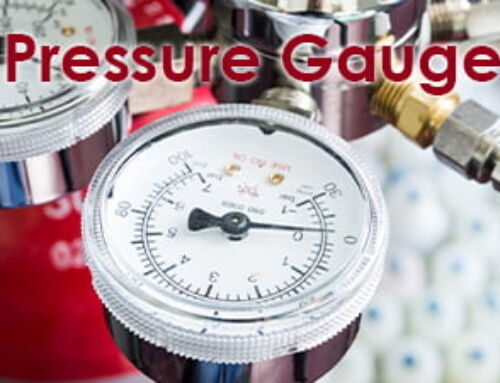In the realm of instrumentation, precision is paramount. However, achieving precise measurements requires a deeper understanding of calibration, traceability, repeatability, and accuracy.
This comprehensive article explores the interplay between these crucial concepts, delving into their significance in ensuring reliable and trustworthy measurements.
Join us as we unravel the intricacies of calibration and traceability, and uncover the essential role that repeatability and accuracy play in achieving precision.
Get ready to embark on a journey that will enhance your understanding of these fundamental aspects of instrumentation.
Calibration: Unveiling the Key to Measurement Accuracy

Calibration is the cornerstone of accurate measurements, providing a reference point for instrument readings.
It involves comparing the output of an instrument to a known standard to determine any deviations or errors.
Key aspects of calibration include:
- Standards and Reference Instruments: Calibration relies on traceable standards and reference instruments with known accuracy.
These standards can be maintained by national metrology institutes or accredited laboratories. - Calibration Intervals: Instruments should be calibrated at regular intervals to maintain accuracy.
The calibration frequency depends on factors such as the instrument’s stability, usage conditions, and industry-specific regulations. - Calibration Certificates: These certificates provide documented evidence of the calibration process, including the standards used, measurement uncertainties, and the instrument’s performance.
These certificates ensure traceability and serve as a quality assurance measure. - Importance of Calibration: Calibration is crucial for maintaining measurement accuracy and ensuring that instruments provide reliable and trustworthy results.
It helps detect and correct any deviations or errors in instrument readings, allowing for precise measurements. - Calibration Methods: There are different calibration methods, including comparison, where the instrument is compared to a standard of higher accuracy, and self-calibration, where the instrument has built-in calibration capabilities.
It can be performed using various techniques, such as electrical, mechanical, or optical methods, depending on the type of instrument being calibrated. - Calibration Equipment: It requires the use of calibrated equipment or standards with known accuracy.
These standards can include reference instruments, traceable artifacts, or physical constants.
Calibration laboratories or facilities often maintain these standards to provide accurate calibration services.
Traceability: Ensuring Measurement Consistency and Confidence

Traceability ensures the accuracy of measurements by establishing a chain of comparisons to national or international standards.
It provides a documented path, linking the measurement to a known reference.
Key aspects of traceability include:
- Metrological Traceability: Metrological traceability involves establishing a clear and unbroken chain of comparisons from the measurement result to the national or international standards.
This traceability ensures measurement consistency and confidence. - Calibration Laboratories: Accredited calibration laboratories play a vital role in maintaining traceability.
These laboratories follow established procedures and participate in proficiency testing to ensure accurate calibrations and traceable results. - Documentation: Proper documentation, including calibration certificates, measurement procedures, and records, is essential in demonstrating traceability.
It allows for independent verification and establishes the reliability of the measurement results. - Importance of Traceability: Traceability ensures measurement consistency and confidence by establishing a clear and documented chain of comparisons to national or international standards.
It provides a means to verify the accuracy of measurements and ensures that results are comparable across different laboratories or instruments. - Traceability Chain: The traceability chain starts at the highest level of standards, such as the International System of Units (SI) and
progresses through different levels of calibration laboratories, certificates and procedures.
Each step in the chain must provide a documented link to the previous level, ensuring traceability. - International System of Units (SI): The SI is a globally recognized system of measurement units based on fundamental constants of nature.
It serves as the foundation for traceability, providing a consistent and uniform basis for measurements worldwide.
Repeatability: Consistency for Reliable Measurements

Repeatability refers to the consistency of measurements obtained when the same quantity is measured multiple times under the same conditions.
It provides an indication of the instrument’s precision and its ability to reproduce results.
Key aspects of repeatability include:
- Variation Analysis: Repeatability is assessed by analyzing the variations in measurement results obtained from repeated measurements.
Statistical methods, such as repeatability standard deviation, are used to quantify the level of variation. - Environmental Factors: Controlling environmental factors, such as temperature, humidity, and vibration, is crucial in ensuring consistent and repeatable measurements.
Stable conditions contribute to reducing measurement variability. - Importance of Repeatability: Repeatability measures the consistency of measurements when repeated under the same conditions.
It is crucial for obtaining reliable and consistent results, particularly in applications where repeated measurements are necessary for statistical analysis or quality control. - Statistical Analysis: Repeatability is often assessed using statistical methods such as repeatability standard deviation or the coefficient of variation.
These methods quantify the level of variation and provide a measure of the instrument’s precision. - Influencing Factors: Repeatability can be affected by various factors, including instrument stability, environmental conditions, operator technique, and sample characteristics.
Minimizing these factors and maintaining consistent conditions contribute to improving repeatability.
Accuracy: Bridging the Gap to True Measurement

Accuracy represents the closeness of a measured value to the true value of the quantity being measured.
It encompasses both systematic and random errors.
Key aspects of accuracy include:
- Error Analysis: Accuracy is determined by quantifying and analyzing the errors associated with a measurement.
Systematic errors arise from calibration or instrument bias while
random errors stem from factors such as noise or variability in the measurement process. - Calibration and Correction: Calibration plays a pivotal role in establishing accuracy.
By calibrating instruments against traceable standards, systematic errors can be identified and corrected, improving accuracy. - Importance of Accuracy: Accuracy represents the closeness of a measured value to the true value of the quantity being measured.
It is essential for making informed decisions, ensuring product quality, and meeting regulatory requirements. - Systematic and Random Errors: Accuracy encompasses both systematic and random errors.
Systematic errors result from biases or inaccuracies in the instrument or measurement process and can be corrected through calibration.
Random errors arise from fluctuations or variations in the measurement process and can be minimized through repeatability. - Uncertainty: Accuracy is often accompanied by a measure of uncertainty, which quantifies the range of possible values within which the true value is expected to lie.
Calculating and reporting measurement uncertainties provides a comprehensive understanding of the reliability and limitations of the measurement.
Conclusion
Calibration, traceability, repeatability, and accuracy are interconnected elements that shape the foundation of precision in instrumentation.
Calibration provides the reference point and traceability to known standards, ensuring accurate and reliable measurements.
Repeatability offers consistency for reliable results, while accuracy bridges the gap between measured values and the true value.
By understanding and implementing these concepts, industries can achieve trustworthy and precise measurements, enhancing quality control, process optimization, and overall operational efficiency.







Leave A Comment